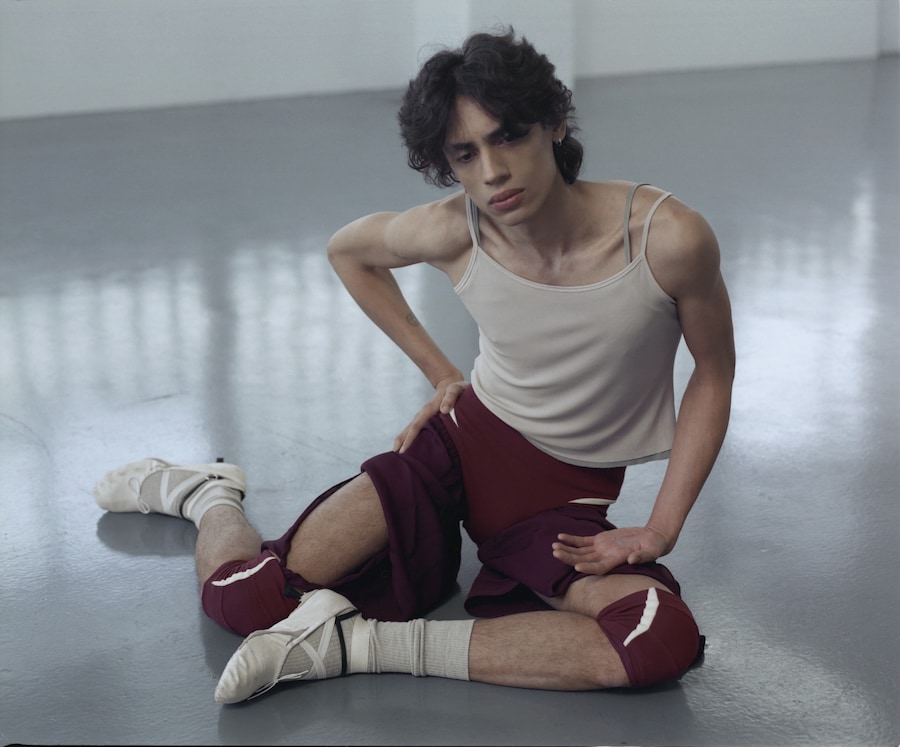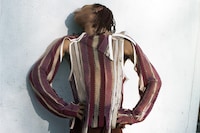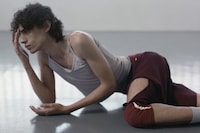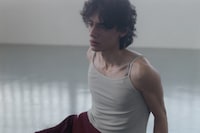Drawing on the diaries of Nijinsky, Jacek Gleba’s delicate Central Saint Martins graduate collection reimagines queer menswear with a dancerly lightness
Jacek Gleba’s Central Saint Martins student ID has just expired, bringing a close to nearly a decade in higher education – from a Bachelor’s degree in PR and advertising in Barcelona, a design diploma, to an MA at Europe’s most famous fashion school. His final collection, which closed the February graduate show, drew on the diaries of early 20th-century choreographer Vaslav Nijinsky, and treats dance as a form of intimacy and movement as a private language. Instead of the usual sexy, fetish-inspired queer fashion, Gleba proposed something quieter: subtle and pleasing daywear designed for everyday life, not just the night. “I always say that my fashion is about the game of flirting; not so much the actual intercourse, it’s about everything that comes between,” Gleba says.
Born to a Spanish mother and a Polish father, Gleba has a distinctly Mediterranean outlook – open, calm, and warm. “I grew up here,” he says, speaking from his childhood bedroom in Barcelona during a short visit home. “Nijinsky was Polish too, but raised in Russia, so there’s a parallel – a Polish family, but shaped by another culture.” The dancerly spirit of Nijinsky runs through Gleba’s final collection, with layered tank tops featuring delicate straps, jersey briefs, kitten-heeled ballet shoes, and leotards finished with soft draping. These are streamlined clothes designed for movement, beautiful yet pragmatic. Following Kim Jones’ swan song collection at Dior Men, which also drew inspiration from ballet legend Rudolf Nureyev, it seems balletcore isn’t just for girls after all.
Here, with the exclusive publication of his delicate new campaign, Jacek Gleba discusses the making and meaning of his brilliant and tender graduate collection.
“I feel like queerness is something you act out, not something you wear. I wanted my collection to physically manifest that kind of movement. That’s why a lot of the garments have open seams, linings that spill out, and elements that move around the body. They’re meant to evoke a kind of feminine, fluid motion – something I’ve always noticed and appreciated.
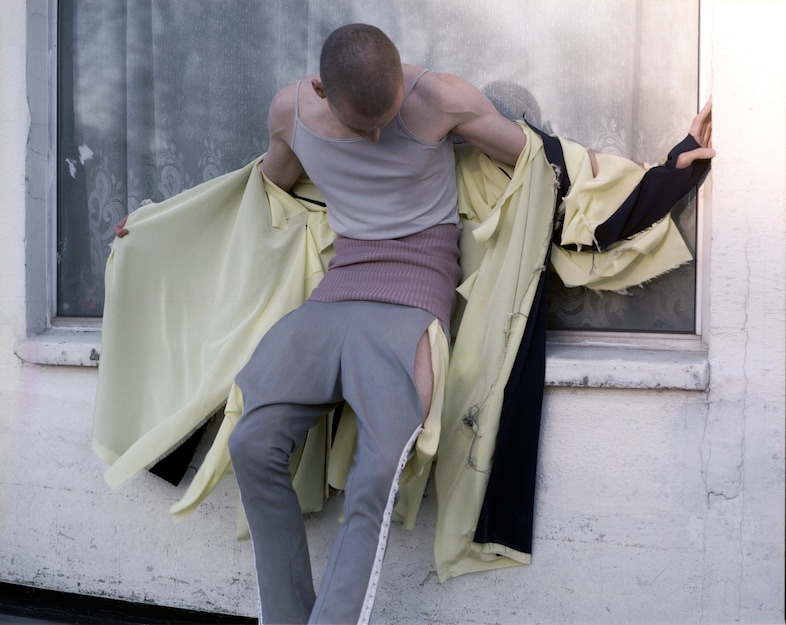
“I took inspiration from Afternoon of a Faun, a ballet choreographed by Nijinsky. It’s about a faun who wakes up and sees a group of girls dancing. He wants to approach them, but is too shy. When one of the girls drops a scarf, he picks it up and dances with it instead. In the end, the girls leave, and he lays the scarf on the ground, lies down on it, and cums on it. That ending was very shocking to audiences in 1912, but I found it a really beautiful portrayal of desire, wanting something but not being socially able to make it real.
“The costuming is fascinating too: a very tight, almost cow-patterned leotard, contrasted with the soft, flowing scarf. I love the tension between the two, the structured leotard against the looseness of the scarf, and that idea really influenced the collection, especially the jersey pieces. Balancing something tight with something looser creates a sense of movement that I was very drawn to.
“Lightness was a really important part of the process, too. I wanted the clothes to feel physically light, almost airy. One big reference was Hail the New Puritan, the 1980s film by Charles Atlas about Michael Clark. There’s a scene where a dancer runs along a canal, looks into the camera, and says, ‘I feel so three-dimensional today.’ She feels incredibly light but also very physical, grounded – and that’s exactly the feeling I wanted the collection to capture.
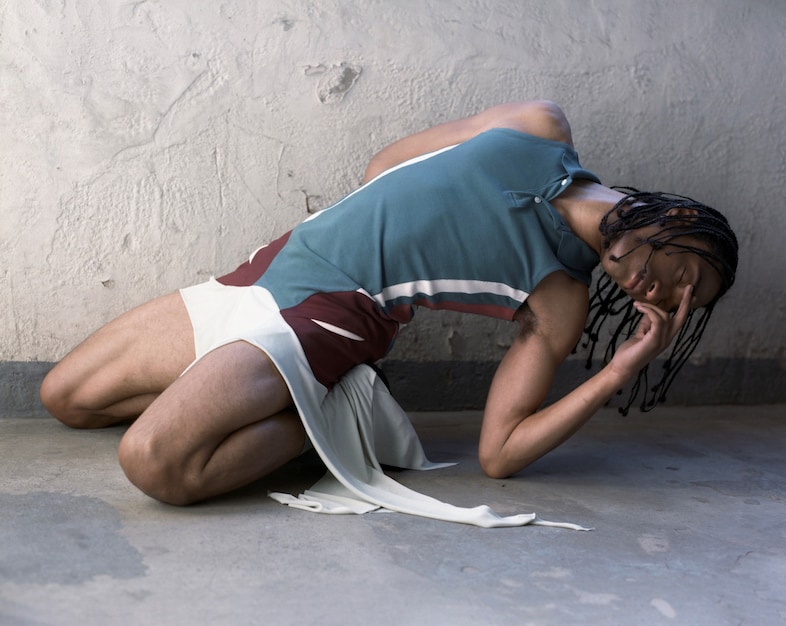
“Inside every garment, there’s a tag featuring a diary entry from my own personal journal. After reading Nijinsky’s diary over the summer, I started writing my own during the making of the collection. Different entries were printed onto fabric and turned into garment tags. Some are intimately hidden inside the garments, while others, like on the trench coat, are placed on the outside. There’s one shirt, for instance, that’s tied to a guy I was seeing over Christmas break. I was making the shirt in my room during that time, and every time he came over, it was a bit more finished. It felt right for that shirt to carry the memory of him.
“Fashion is incredibly personal to me. Every collection is informed by what I want to wear. I always approach a new collection thinking, ‘How can this change the way I dress?’ I take my current wardrobe, put it through the ‘machine’ of the collection, and see what it creates. Getting dressed every day feels like a kind of research – trying new combinations, experimenting – and that daily process directly feeds back into my design.”
Photography: Zacharie Lewertoff. Creative direction: Cayetano García Sahurie and Jacek Gleba. Styling: Styling: Cayetano García Sahurie. Make-up and hair: Hannah Gallery. Movement direction: Gian Singh Sanghera-Warren. Photography assistants: Hui Zhang and Viella Gatera. Models: Benjamin Lessore, Ethan Joseph and Joe Winter
